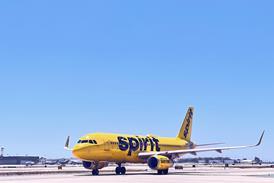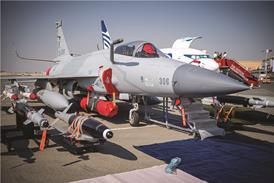During a recession the clamour of voices calling for airlines to consolidate gives the impression that it is an inevitable consequence of the industry's woes. True, financial troubles and startling traffic falls make consolidation, acquisitions and failures more likely. It is also true, however, that none of the barriers that have thwarted such moves in the past have been removed to any significant degree.
The highly regulated and cross-border nature of the industry has always made consolidation challenging. And, some argue, the tough market climate is acting as both catalyst and hindrance for consolidation. But the severity of the crisis means even the likely empire builders are having to make strengthening their own foundations their priority.
Neither has there been the acceleration in a concentration of players which might have been expected as airlines were falling apace last autumn. "I've always believed airlines are like elephants - they don't die very easily," says aviation consultant and former Olympic Airways chairman, Rigas Doganis, "probably because there are all sort of props from governments, banks, manufacturers and lessors. The drop in the oil price helped struggling carriers continue to operate since the spring. I think the next crunch will come in the middle of the coming winter."
|
|
|---|
© Rex Features |
While there may be a more pressing financial imperative for consolidation, the much-bemoaned regulatory straight-jacket remains largely intact. Even where attitudes of regulators have warmed to consolidation, nationality clauses in the bilateral agreements governing much of the industry mean obstacles to full cross-border integration remain.
Consequently consolidation in the form of mergers has largely been restricted to national boundaries, or in the recent example of Spanish budget carriers Vueling and Clickair, the same city. This makes larger single markets the natural place for mergers.
The US has seen the largest combination yet through last year's marriage between Delta Air Lines and Northwest Airlines. Delta senior vice-president, network planning, Bob Cortelyou says the merger has enabled it to use their respective strengths to help "better weather" the tough revenue environment. "By taking the strength of the Delta network, particularly across the Atlantic and into Latin America and Africa, and joining it with the strength of the Northwest network, particularly into the Pacific, the Delta/Northwest merger provides flexibility and opportunity that none of our competitors have matched."
US consolidation
But the dalliances last year between other US majors ultimately only resulted in a wide-ranging alliance between Continental and United Airlines, involving the former jumping ship from SkyTeam to Star Alliance in the process. Deeper co-operation has thus far been rejected, although the recent news that Continental chief executive Larry Kellner is leaving the carrier at the year-end sparked fresh speculation he could help facilitate a fresh attempt to bring the two together. "I would rate the possibility as good of him becoming a white knight in a different suit," says US aviation consultant Bob Mann.
Stuart Klaskin, co-founder of US aviation consultancy KKC, suggests the cooling off in the most recent round of US consolidation is only temporary. "We continue to see the macro-economic effect of the last 18 months weighing on the airlines. I think we will see more interest in consolidation," he says. "This will be consolidation to generate cost savings and position the industry to generate increased unit revenues, as opposed to being strategic. It's more defensive consolidation than strategic consolidation."
But while the desire may be the there for more consolidation, the financing may not. "There is a lot of interest, but the key issue is whether they can be financed," says Mann. "The US airline industry certainly understands the economics of consolidation. But, unlike the 2005/07 era of consolidation, we are talking about consolidation of going concerns and some of the tailoring options possible under bankruptcy are not available.
"The other serious issue is it is not clear they can in the current market put together the capital to implement a transaction. It's not as simple as putting two airlines together, there are transition costs." He estimates these at $3 billion for Delta/Northwest, and at $1.8 billion for US Airways/America West. "This has to come from new money, the carriers cannot generate this from internal cash flows. It really comes down to which guys have the money to pay to play."
Movement continues outside of the majors, with Republic Airways and Southwest vying for Frontier Airlines. This in part reflects interest from regional operators in repositioning themselves, while Klaskin also sees room for consolidation activity among the US low-cost carriers. Cortelyou adds: "We're seeing consolidation happening: two airlines have a bid out on Frontier. And, the industry as a whole is consolidating in the sense that last year's spike in fuel cost and the current economic environment has led to significant capacity adjustments."
Key Asian growth markets India and China also seem consolidation candidates, with the financial plight of carriers a catalyst (see box stories). "Consolidation is currently a major topic of discussion as a way to improve the health of Asian airlines," notes Singapore-based Standard & Poor analyst Shukor Yusof. "Indeed, rationalisation of excess capacity and fewer competitors would go a long way to fix the imbalance of supply and demand, consequently improving pricing.
"However, Asian carriers and governments for that matter are reluctant to pursue merger and acquisition activities mainly because the track record of airline mergers is dismal. Very few mergers have delivered promised benefits. While airline marriages can generate revenue benefits, the cost implications have historically been less favourable," he says.
European approach
Europe is active, but Doganis notes true consolidation has been limited to airlines in the same countries. "Because of the constraints of the nationality rule in air service agreements, what we have had in Europe is 'arms length' consolidation with jointly-owned airlines maintaining their separate brands, operations and labour forces. What we have seen is a consolidation of ownership through acquisitions, but not true integration."
Lufthansa has led the charge in Europe, appearing to have finally tied up its move for Austrian to add to Swiss, Brussels Airlines and bmi (see box story)."Lufthansa has a fairly clear strategic objective, to try to build a larger potential home market, which it can use to pump traffic through its hubs," says RBS analyst Andrew Lobbenberg. "But there is also distinct strategic rationale around each of their deals. I'm also pretty impressed with what they have paid for their acquisitions. They seem to have negotiated pretty well. The bigger question is whether they are stretched by the managing challenges of running so many businesses."
Air France-KLM has built on its initial tie-up, striking a deal with the new Alitalia and continuing its interest in a stake in SkyTeam partner CSA Czech Airlines. "Lufthansa's strategy appears to be to dominate a large geographical area in Europe centred on Germany. The Air France-KLM approach has been more opportunistic," says Doganis.
Oneworld carriers British Airways and Iberia meanwhile are still to broker a deal in their merger talks which signalled the start of European consolidation activity last summer.
"A deal with Iberia is important if BA wants to be one of the three major players in Europe and if it wants to build oneworld into one of the major alliances," says Lobbenberg. "But in terms of economics, it's not clear that it's more important to them than antitrust immunity with American."
Much of the attention of network carriers has been on establishing immunised international alliances. Notably transatlantic joint ventures have been sought by members of all three major alliances. SkyTeam partners Air France-KLM and Delta have already secured approval for their expanded joint venture. At a launch event this year Delta chief executive Richard Anderson said the partners had discovered through their existing joint venture there was no business need for trans-border equity investments. Air France-KLM and Delta estimated synergies of around $150 million each from the joint venture.
The joint venture's importance in offsetting capacity reduction was highlighted by Delta during its second quarter results. The US carrier is cutting international flying capacity around 15% this year, but says the joint venture allows it to recapture a significant amount of that revenue. Cortelyou adds: "The real value of a joint venture such as ours is it opens opportunities to serve markets that wouldn't necessarily be viable for any one airline on its own. That means customers have more options for air travel and airlines are generating greater revenue. "
Star Alliance carriers Air Canada, Continental, Lufthansa and United in July secured approval for their joint venture. Kellner from Continental says they have now had their first discussions about how to roll out the joint venture. He explains the carriers have agreed the structure of the agreement, but the framework for the joint venture needs to be developed. Continental formally leaves SkyTeam in October.
Oneworld carriers BA, American Airlines, Finnair, Iberia and Royal Jordanian remain optimistic on securing US approval shortly for their antitrust immunity application covering transatlantic flights. "We saw the Continental approval by DOT as being positive," says BA chief executive Willie Walsh. "I think the fact that the DOT stood their ground is very possibly significant to us."
The move towards immunised alliances has also latterly spread to the Pacific market, with new entrants in the Australia mainland to US market - Delta and Virgin Blue - moving for a transpacific tie-up. "On the Pacific it has to be a record between market entry and applying for antitrust immunity," notes Mann. "But you can easily see the issue, in the downward economy there is a lot capacity. They just have to be brutal."
Klaskin adds: "There is not a lot of point in adding a lot of new capacity to the market when you can just go for an alliance. The trick is expanding the revenue opportunity without expanding capacity."
But not all have welcomed the recent antitrust immunity approvals. Middle East operator, and the largest non-aligned network carrier, Emirates argues these approvals will result in "carriers like Air Canada and Lufthansa increasing their market power and effective dominance" at key airports and on major European, American and Asian routes. For example Emirates, which has been pressing for more access into Canada, complains the near-80% flight departure market share held by Star Alliance at Frankfurt enables it to dominate the Canadian market on a global scale via their German and Toronto hubs. "We therefore argue that such market power must be the final nail in the coffin for the aero-political protectionism demanded and often secured by some carriers in their home markets," Emirates argues.
Cortelyou though says such JVs bring both financial and competitive strength for employees and shareholders of the partner airlines, while "customers benefit from access to greater route networks, harmonised scheduling and aligned frequent flier programmes, to name a few."
Klaskin meanwhile also sees these ventures within the major alliances evolving to encompass additional partners on a more flexible and opportunistic basis, based for example on specific routes. "I think ultimately we will start to see some of the major alliances allowing other carriers to come in on a selected basis," he says.
The three major alliances continue to expand their global footprint. Oneworld through Russia's S7, SkyTeam with Vietnam Airlines, and Star through Greek carrier Aegean Airlines have all added new members this year. But all acknowledge geographical white spots in their coverage remain.
One such example is Brazil, where Gol has been courted by SkyTeam and oneworld, keen to have a Brazilian member to balance the addition of TAM in Star. But while Gol is rapidly expanding its portfolio of codeshare partnerships, which includes SkyTeam's Air France-KLM and oneworld's American, Gol is not interested in joining a global alliance.
"In my opinion alliances don't work for an airline which doesn't fly internationally long-haul," says Gol chief executive Constantino de Oliveira Junior. "The benefit of the alliances is the support you're going to have on the international destinations and the distribution there. As we are not flying long-haul, there's no reason to be in an alliance."
Qatar Airways also believes there is more to be gained from codesharing with carriers from multiple alliances. "An alliance can be beneficial to us but it can also be a detriment," says Qatar chief executive Akbar Al Baker. "If I joined an alliance, I would have to pull out of certain routes. We won't shrink just because we want to be part of an alliance." He claims the existing alliance structure also benefits the largest members at the expense of carriers the size of Qatar or smaller. He says the smaller and medium-sized members are used by the largest members as hub feed and get "little value for the seats they sell those carriers". He adds: "We'd like to be part of an alliance, but at the same time we want to protect our interests."
Financial Impetus
For the alliances, SkyTeam chairman Leo van Wijk says, while airlines are focused on their own challenges during the tough times, alliances provide flexibility for them to scale back without leaving markets. "Many airlines are being forced to reduce their networks. While they have tried to do it through [reducing] capacity and frequency, some marginal markets have been abandoned by airlines. The alliance gives you the opportunity to offer those destinations. In this requirement, they play an important role. I think that helps you to get back in the market when things get better, as you never really left," he says.
So while regulatory shackles remain, the precarious conditions facing the sector which are prompting carriers to look again at structural change will continue to drive consolidation efforts. "The strategy has been there for decades, through interlining, codesharing and then immunised alliances," says Mann. "It is the precipitous decline in full fare business revenues on international routes that is really driving this, plus the drop off in high rate cargo. These are the two revenue streams that have contributed to the growth in international flying and now we see the costs outstrip the revenues dramatically. Costs are going to have to be reduced through efforts like consolidation and joint marketing. They aren't for growth and control needs, now they are more survival strategies."
Source: Airline Business
























